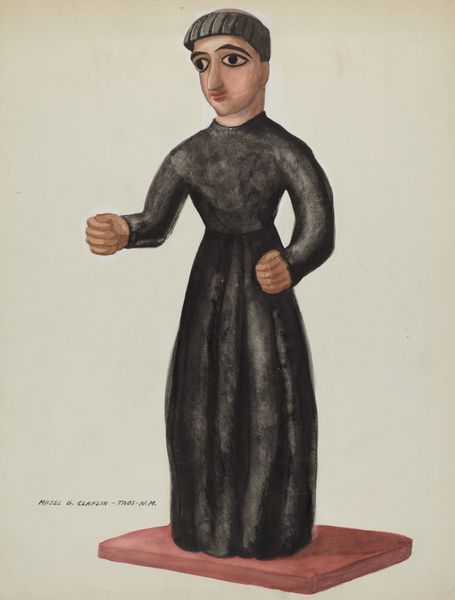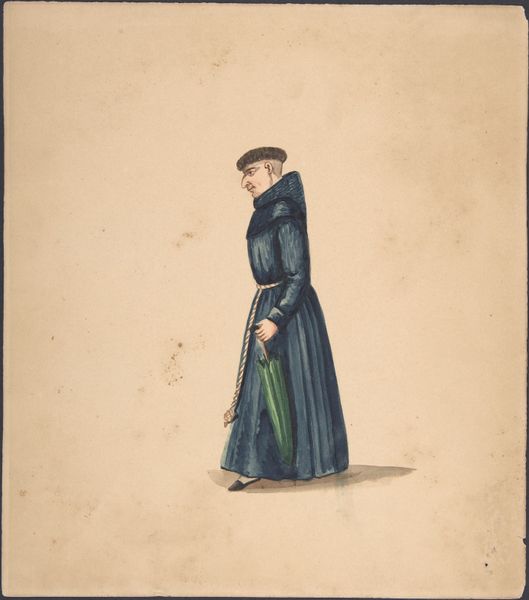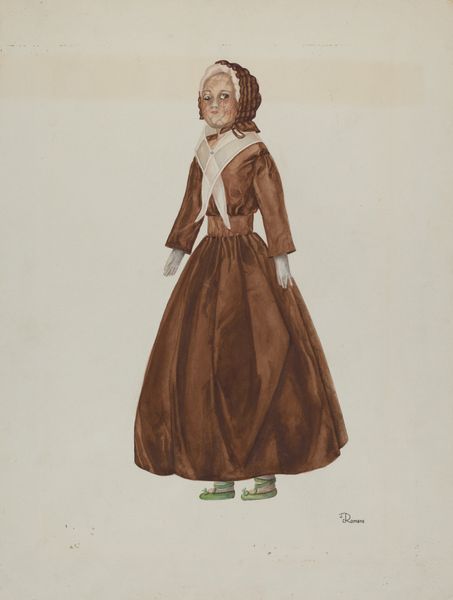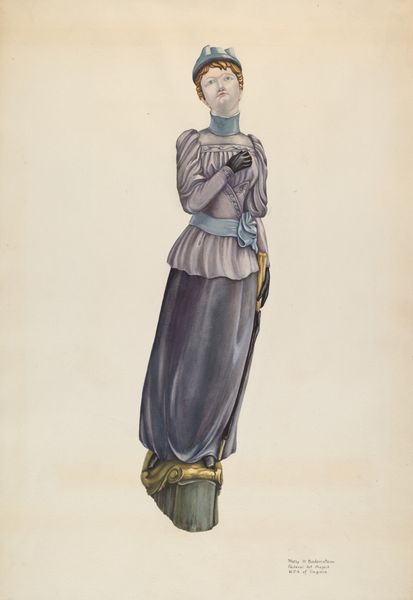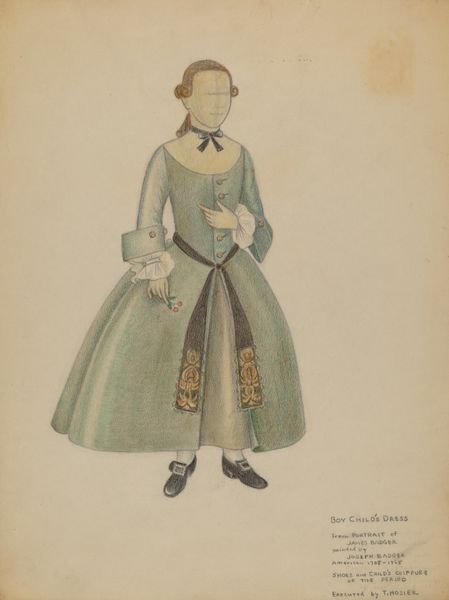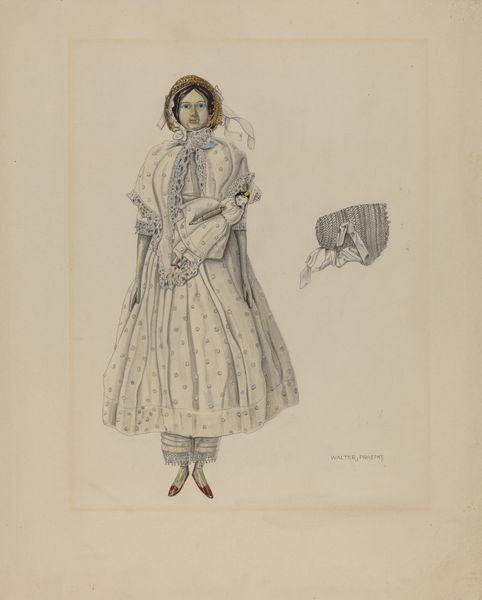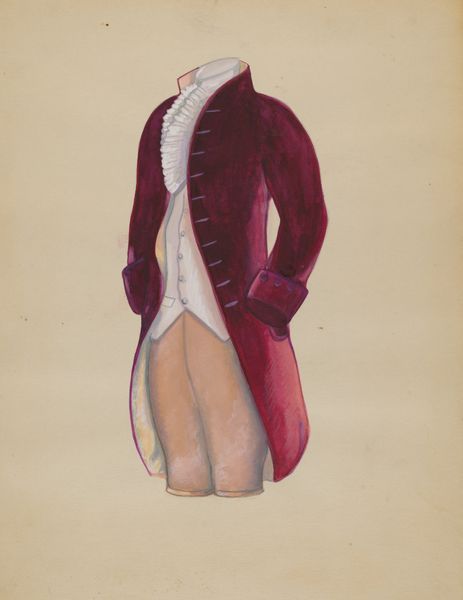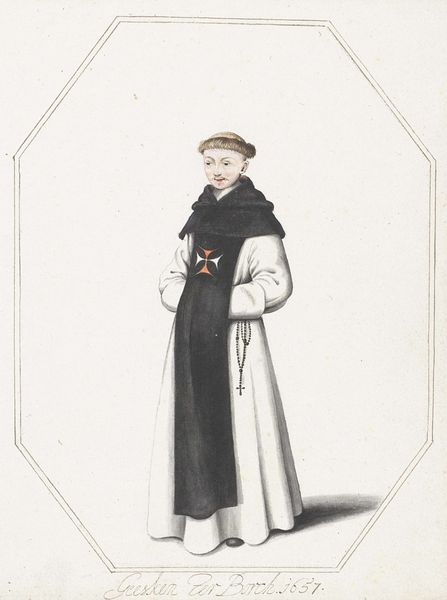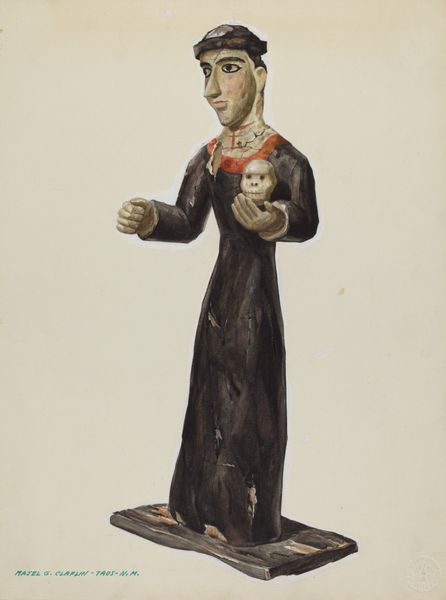
drawing, painting, watercolor
#
drawing
#
painting
#
figuration
#
watercolor
#
portrait reference
#
portrait drawing
#
watercolour illustration
#
watercolor
#
fine art portrait
Dimensions: overall: 36 x 28 cm (14 3/16 x 11 in.) Original IAD Object: c. 15"
Copyright: National Gallery of Art: CC0 1.0
Curator: Majel G. Claflin painted this watercolor drawing sometime between 1935 and 1942. The work is titled "Wooden Santo - Friar with Cross on Breast." Editor: There's a strange sense of… solidity about it, even though it's a watercolor. The geometry is simplified, yet the figure seems incredibly present. Curator: Indeed. Claflin likely created this work under the Public Works of Art Project, part of Roosevelt's New Deal. Artists were tasked with documenting American life, and folk art, like the Santo, played a role in this period. Editor: Looking at it formally, the restrained palette enhances that austere mood. The subtle variations in tone within the browns and grays lend form, but don't distract. The cross is centered on the chest, drawing your eye immediately. It's all very deliberate. Curator: Santo carvings themselves were often made by untrained artisans, from readily available wood, reflecting a deep local connection. Claflin, as an artist, engages in that spirit of documentation, focusing on these vernacular religious icons. The materials available shape the creative output, right down to Claflin's own artistic output. Editor: I see your point, but consider the subtle stylization—the almost geometrical rendering of the friar's robe. It’s reminiscent of Cubist influence, streamlined for popular consumption. There's a dialogue happening between avant-garde art and regional craft traditions within this single image. Curator: Right, but Claflin is also showing the production of culture in marginalized communities at a specific historical moment, the desperation and innovation born out of economic downturns. It reminds us of resourcefulness—how artistic practices reflect and adapt to economic realities and connect them to community needs. Editor: And the cross—simple yet profoundly symbolic—functions as the organizing principle of the whole composition. Vertically it echoes the verticality of the figure and also cuts through it. The squareness almost anchors the man. It's like the axis around which all the rest revolves, in multiple ways, perhaps both visual and spiritual. Curator: This intersection of material realities and artistic interpretation emphasizes that "Wooden Santo" reminds us how artists engage with history, labor, and identity formation. It’s all synthesized through the lens of that cultural object. Editor: Perhaps we both see how seemingly simple composition, belies a wealth of social and spiritual meanings. Curator: Agreed, a confluence of folk art traditions filtered through both economic circumstance and artistic vision, creating an object pregnant with context.
Comments
No comments
Be the first to comment and join the conversation on the ultimate creative platform.
